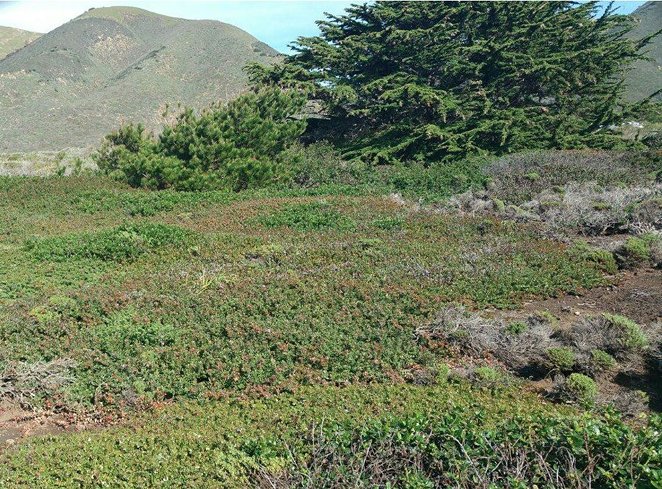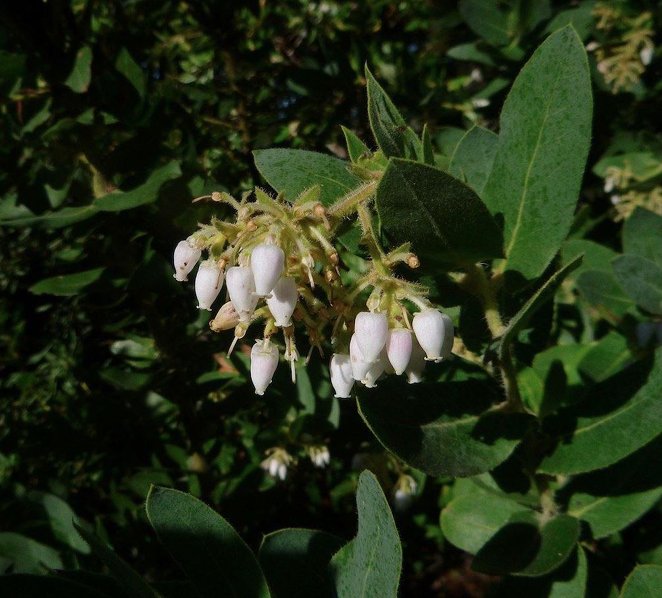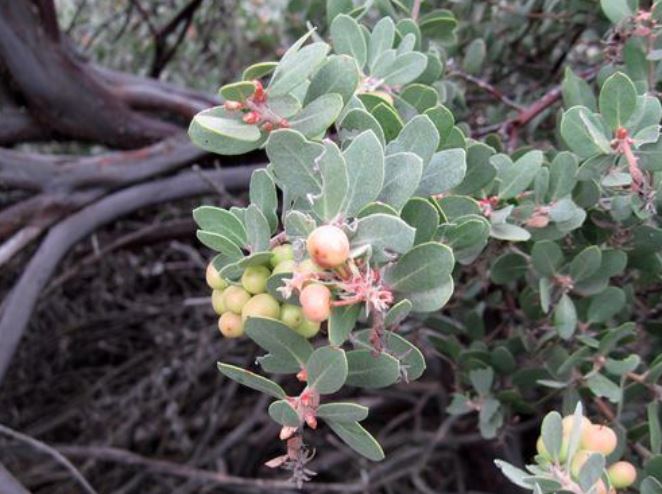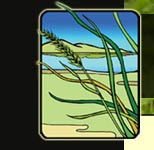Manzanita Diversity in California
Story by Steve Glascock
Arctostaphylos, commonly known as Manzanita or “Bearberry,” is a widespread genus in the chaparral dominant regions of California, ranging from the high alpine Sierra Nevada to foggy mountains of coastal Northern California and Oregon all the way down to Baja California. They can tolerate extreme drought, freezing temperatures, intense fire, and thrive in nutrient-poor soils. Boasting over 90 species, Arctostaphylos has the title of being the most diverse shrub genus in all of California. The diversity of this genus can be largely explained by the diversity of its native soils, annual rainfall, elevation, fog, and fire intervals. Arctostaphylos is a member of the Ericaceae family, flowering in the late winter/early spring seasons, with numerous clusters of bell or urn shaped flowers, ranging in color from white to pink to red. Forms of different species can vary from ground covers to small trees, allowing the genus to take advantage of the highly variable habitat types California offers.

The most diverse regions of the Arctostaphylos genus occur within a short distance from the oceanic influence, in a habitat type known as Maritime Chaparral. It is within this habitat type that Arctostaphylos significantly diversified, which can be attributed to both the milder coastal temperature averages, reduced solar exposure under the cover of fog, and also as well as the highly diverse geology laid atop the tectonically active California coastal range. Arctostaphylos is also well known to have strong mycorrhizal relationships beneath the surface of the soil. These microscopic fungi are the bridge between nutrient poor soils and healthy stands of Manzanita. Similar to conifers, the stands of Arctostaphylos create a thick mulch of dead leaves below them, and the coexistence of conifers and manzanita is often observed. Due to the urbanization of California and the continued loss of critically endangered habitat types, it is also common for these local endemics to be listed as threatened or endangered species. A. hookeri ravenii, for example, is believed to be the most endangered and restricted plant species in the United States. In fact, approximately 60% of Arctostaphylos species in California are listed as rare on Calflora. With such restricted ranges, it is likely that many of these rare species will increase in rarity over time.

Despite having being faced with harsh dry summers, devastating wildfires, and nutrient poor soils, Arctostaphylos continues to dominate California’s chaparral diversity. Lucky for us Santa Cruz residents, one of the best places to witness the diversity of this genus is at the UCSC Arboretum. The Arboretum has dedicated its back forty acres to a California Native plant educational garden, designed to include important ethnobotanical specimens to encourage people to build a meaningful relationship with native plants of our region. In this “re-learning” garden, manzanita are arranged by region, inviting guests to witness the exciting diversity of this incredible collection of specimen, while also enjoying a sweeping view of the Monterey Bay.

For those who want to be more involved: Native plant volunteer days are every Thursday morning at the UCSC Arboretum, ending around lunch time, led by a very dedicated crew of native plant enthusiasts.
Did you know? Arctostaphylos berries, leaves, and wood are all used by indigenous people in various forms of consumption, including fuel for high temperature fires, dried/crushed/raw berries for food, and dried leaf smoking blends, similar to tobacco.

























